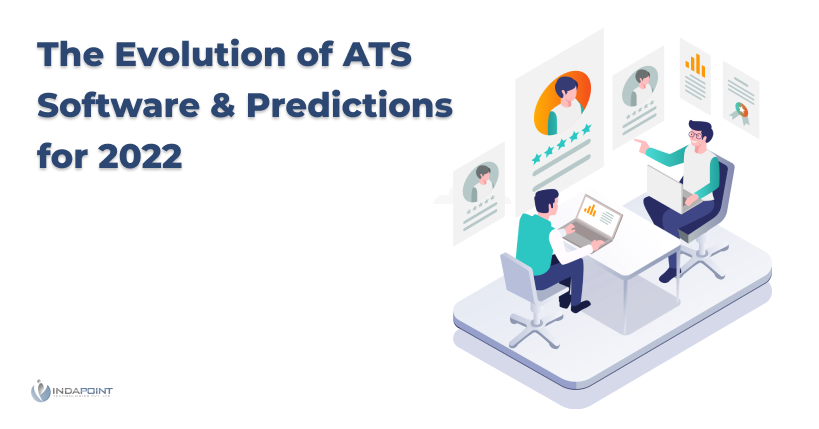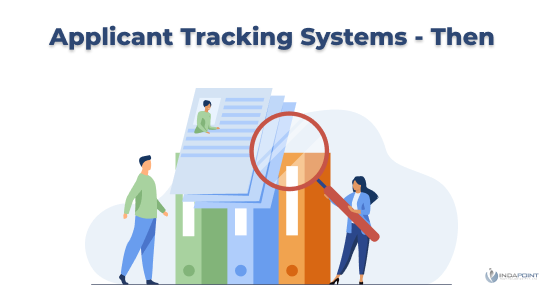The Evolution of ATS Software & Predictions for 2022
September 12, 2022

A product program known as a candidate global positioning framework, or ATS, may deal with all recruiting prerequisites by going about as an information bank. As the name implies, ATS provides automatic applicant tracking and has the storage and processing power to handle vast amounts of data. Applicant tracking systems support candidate screening, shortlisting, and communication with capabilities including interview scheduling, assessment generation and comparison, message dissemination, universal search, and customized import and export of data.
ATS alternatives are accessible for many types of enterprises, whether enterprise, midsize, or small businesses. Moreover, enterprises can select from various deployment models based on their unique business needs. For illustration, suppose you need to buy an ATS system for a medium company with 800 employees (distributed across three locations), which you intend to expand over the coming year. There was a time when you couldn’t discover a solution tailored to your demands, finances, and growth objectives. Therefore, you were forced to choose a standard one-size-fits-all solution. Today, however, businesses have an abundance of options in a market that caters to even the most specialized set of requirements.
Recruiters, sources of candidates, hiring managers, and HR professionals have access to some of the most potent tools today: the applicant tracking system (ATS). An ATS allows for more effective talent acquisition strategies and recruiting processes. Organizations utilize candidate ATS software to reach a bigger pool of qualified up-and-comers. The program makes overseeing competitors more straightforward and smoothes out the application interaction. Eventually, an ATS helps organizations choose the best contender for each position.
They are helpful as a candidate database and as a recruiting tool. To better understand how ATS solutions have changed over time and where they are headed in 2022, we will look back at the earliest ATS solutions.
The future growth potential of the global applicant tracking software industry has been assessed by the applicant tracking (ATS) software. It provides information on industry evaluations, trends, and recent technological advancements. The review offers state-of-the-art market knowledge and vital discernment to assist clients with a better comprehension of the market system and pursue informed speculation choices.
Evolution of ATSs
The emergence of ATS is transforming the hiring market partly because of rising demand. New features like artificial intelligence and machine learning are constantly added to give a comprehensive solution to compete in this cutthroat market. The cost and features play a big role in a team’s decision to include an applicant tracking system (ATS) in their hiring procedure.
Then vs. Now of Applicant Tracking Systems

An ATS’s primary objective has always been to assist recruiters in bringing in as many qualified prospects as possible. Since the late 1990s, applicant tracking systems have been in use. They initially served as a tool to automatically process and store resumes. According to SHRM, ATSs were mainly utilized for compliance, lowering lawsuits by providing better consistency in businesses’ employment practices.
ATSs developed over time to include functions including resume parsing, publishing to job boards, and recruiting statistics. They allowed recruiters to find the most dependable candidate sources and started storing more comprehensive applicant data. They allowed businesses to make data-driven hiring and recruiting decisions while saving time and resources.
Why ATSs immediately developed into a pivotal part of an effective ability-obtaining procedure is clear. Today, 75% of recruiters use an applicant tracking system (ATS), and 94% claim that their ATS positively affects hiring.
In today’s highly competitive job market, where applicant experience is taking center stage in the competition for top talent, they have become even more crucial. A poor applicant experience caused 50% of candidates to decline a job offer. Your employer brand is also influenced by your applicant tracking system (ATS). If they believe a company’s hiring practices are archaic, 54% of Gen Z job candidates won’t even apply.
The enormous advantages of these digital onboarding and virtual recruiting tools were painfully evident during the COVID-19 outbreak when individuals and processes were abruptly compelled to operate remotely. The far-off labor force is turning into a highly durable installation. Toward the finish of 2021, the more significant part of information representatives will be completely remote. Work up-and-comers expect remote work prospects, paperless onboarding, and video interviews. How we locate, engage and retain employees has altered due to these significant changes in how we work.

Many recruiting processes have been mastered by ATS software, making it possible to employ customized recruiting tactics. They give solutions that ease recruiters’ work and deliver an excellent prospect experience. Reaching applicants, developing their talent pipeline, and investing more time in discovering the top prospects are all simple tasks for recruiters and HR departments. For the fastest, most simplified hiring and recruitment process possible, several ATSs additionally provide an onboarding platform.
The ATS solutions of today offer more resources and information than ever. However, they are still developing along with the workplace. We’ll then examine what industry insiders foresee for ATS technology’s future and how it will affect HR tactics.
Final Thoughts
The Applicant Tracking System Software Market, which is expected to be an exceptionally fruitful industry specialty, is expected to gather moderate benefits toward the finish of the expected period. The Applicant Tracking System Software Market research report provides valuable experiences regarding market size, income gauge, deals volume, and others by consolidating a brief examination of the Applicant Tracking System Software Market in minute detail. The research categorically provides the market segmentation for applicant tracking system software and the driving forces affecting the business landscape.
Through a complex investigation of earlier triumphs, the latest examination of the Applicant Tracking System Software market gives partners an early advantage by exhibiting all-out monetary development from 2022 to 2028. Furthermore, experts used validated procedures to determine and support the report’s forecasts. Along with reliable information compiled from various reliable sources, it also includes several recommendations for promoting growth through desirable marketing strategies.
The study explores the potential outcomes shaping the market’s operational profit pattern during the years. It also looks at numerous industry trends, challenges, and methods for reducing their effects. Additionally, it considers market segmentations while assessing the business landscape.
Businesses that don’t use these factors in the hiring processes we see in the market will see a competitor take their candidates. Particularly in the competitive, scarce, and highly high-demand fields of technology and software development, where there is tremendous competition. Employee strength, usability, reporting capabilities, adaptability, and the permitted connectivity with existing systems must all be considered when selecting the finest ATS for your company. Have you put resources into more astute ability boards and business marking procedures? You may alter the candidate experience by selecting the appropriate applicant tracking system software, which is a critical first step.
Please contact us if you’d like to schedule a free consultation with one of our Workforce Solutions experts to discuss your hiring and people management concerns.





